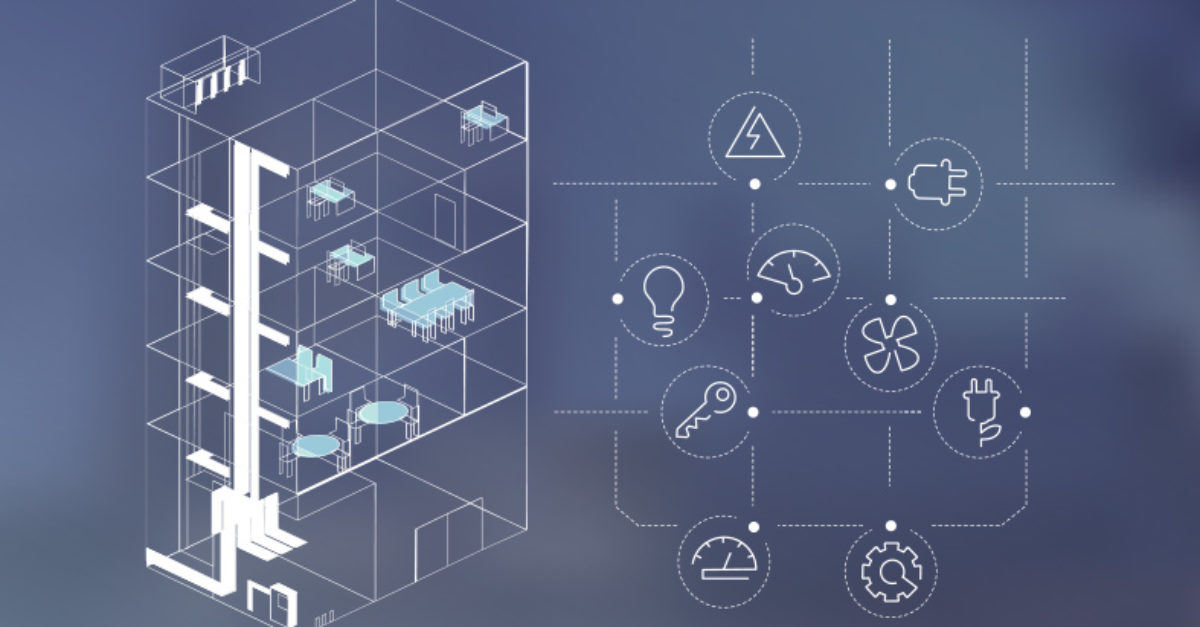Technological advances in the built environment—the structural elements in which humans live, work, and contribute to society—are making buildings more energy efficient, streamlining operating costs, and increasing productivity.
Still, many of the smart, interconnected building technologies that are creating buzz are still just emerging. “Remember,” says Bill Griffin, CEO of Cleaning Consultant Services, Inc. and Cleaning Management Institute master trainer, “just because you see advertising and marketing for these new building technologies, doesn’t mean they are being implemented just yet. Many times, it takes months or years for them to show up.”
Griffin believes one day almost everything in a building, from room occupancy censors to garbage cans, will be connected to custodial staff’s smartphones. This has huge implications for the future of workloading, as these advances in the built environment lead to more efficient cleaning schedules and integrated, technical training.
However, proper implementation will be key. Joseph Aamidor, managing director of Aamidor Consulting, has noticed one constant among companies that report new building technologies do not deliver: They only spend a day or two on training custodial and maintenance staff.
“When it comes to technology, more time should be spent thinking about adoption and training,” says Aamidor, who has written extensively on intelligent buildings and works with building operators to implement emerging technologies. “Smart companies that invest in building technologies will have programs that train in the course of a worker’s day. The trainers should embed with the workers, educating them on how to make each task simpler with the technologies at hand.”
Maintaining and cleaning the buildings of the future will require fully integrated, continuous training from the very beginning of the technology’s adoption. Here are several areas where facility managers will need to accommodate the needs of modern architecture and design, and tips for ensuring proper maintenance.
Adapt to Sensor Sensitivity
While the market is still slowly catching on to interconnected building technologies, buildings are using more sensors. These sensors monitor how building occupants are using space and equipment, and that data can inform how building staff maintain the space. “I’m seeing a lot of new sensors on towel dispensers and soap [dispensers,] and automatic lights that go off on their own in restrooms,” Griffin says. “It’s a little slower on the uptake of actually connecting these things to computers and management side. That’s coming, but [has] not deeply penetrated yet.”
Griffin warns, similar to other types of technologies showing up in modern facilities, that sensor equipment can be much more sensitive than traditional equipment. Managers will need to demonstrate the importance of caring for expensive new sensor equipment in less abrasive ways, by using specific procedures and chemicals that take their sensitivity into account.
Take Advantage of Tech
When sensors become interconnected with mobile devices that can monitor occupancy and usage, the data will save custodial teams significant labor and time. According to Aamidor, sensors like these are only going to become more affordable to implement and will become more highly utilized. To stay ahead of this track, building managers should not only start preparing to train their supervisors and front-line staff on how to use smart technologies, but also on what to do with the data once they have it. That’s because the key to getting the best advantage out of building sensors is understanding how to interpret the information they provide.
“Giving maintenance professionals more data around what is actually happening allows them to move from a schedule-based [maintenance] plan to a condition-based program,” Aamidor says. This is the difference between deploying work on a regular schedule versus when it is needed, which can have an impact on labor hours and service costs if the service provider schedule isn’t in line with the facility needs. “The sensors then end up being more effective and highly utilized.”
What happens if you have data from a variety of sensors around your building that’s unstructured but you aren’t able to identify any trends around it? Aamidor advises clients to use advanced software to help uncover trends. Software can help to predict areas that might be susceptible to complaints, or make it “easier to lodge a service request.” Aamidor recommends installing this type of software on custodial managers’ mobile phones to keep the intelligent technology easy to access throughout the day.
New Surfaces Yield New Cleaning Considerations
Advancements in modern building design and the built environment aren’t limited to sensor technology and the Internet of Things. There are many new types of surfaces showing up in new buildings lately: from laminate flooring, which doesn’t require a finish, to natural, more sustainable materials and self-cleaning surfaces coated with nanotechnology. Griffin has seen interest surge in self-cleaning surfaces and natural materials like bamboo, wall coverings made of peanut and sunflower shells, and natural wool as a floor surface. “I recently even saw some new surfaces that were created by digital printers to look like wood,” he says.
With the adoption of new surfaces in building architecture and design come new cleaning considerations. “All of these surfaces are far more sensitive to cleaning processes that the surfaces we’ve used in the past,” Griffin says. Sustainable natural materials like bamboo floors will not stand up to harsh chemicals or abrasive pads. In fact, using those more traditional approaches could damage these expensive new building elements. As a result, communication and training on all new elements of any building are essential in preserving them.
Take Care With Modern Coatings
Nano coatings can be applied to glass, floors, countertops, and even carpets to give those surfaces self-cleaning properties. However, building personnel need to consider durability when working out a cleaning and maintenance plan.
“The nano coating can be easily removed or scratched,” Griffin says. A lot of these coatings work, in part, by making surfaces smoother so they can be cleaned more easily. When they become scratched by inappropriate chemicals or pads, the scratches form places where soil can hide.
Campaign for a Seat at the Table
Unfortunately, if a building invests in a new technology like a sensor or a cutting-edge surface, the frontline cleaning staff doesn’t always get the message. As new technologies and materials continue to emerge and become more common in new construction, cleaning managers must stay informed about what’s happening in their buildings.
“Every cleaning department needs to have a seat at the table when new building additions are being considered,” says Ben Walker of strategic cleaning consulting firm ManageMen, Inc. “Primarily, that’s to make sure they understand the expectation for cleaning of these surfaces.”
Walker also recommends obtaining warranties for all new technologies and materials. Most manufacturers will have maintenance-related warranties, which outline certain procedures that are known to cause damage to the surfaces. “There is actually a really big problem in the industry where a new technology will be put into a [building without] informing the cleaning crew,” Walker says. “And if they don’t know about the new technology and they use the wrong method or procedure, the warranty will be void.”
For example, when waterless urinal technology first came out a few years ago, it was a great concept—in theory, Walker says. However, many custodial crews didn’t read the warranty, and therefore, weren’t aware these urinals needed to be wiped inside and the cartridges would be ruined if they were touched with a disinfectant chemical. Walker also notes that steam cleaners will void the warranty on many of the new flooring surfaces buildings are beginning to use. “It’s so important for the cleaning department to understand the manufacturer’s recommendation for maintenance so they don’t inadvertently void warranties or, worse, damage surfaces,” he says.
Back to Basics: Implement Training
Griffin expects the adoption of self-cleaning coatings and new surfaces to continue. In the meantime, “It drives the need for more detailed and continuing training for individuals,” he says. “Trainers need to show samples and conduct hands-on training, not just [train through] talking or videos,” he says.




